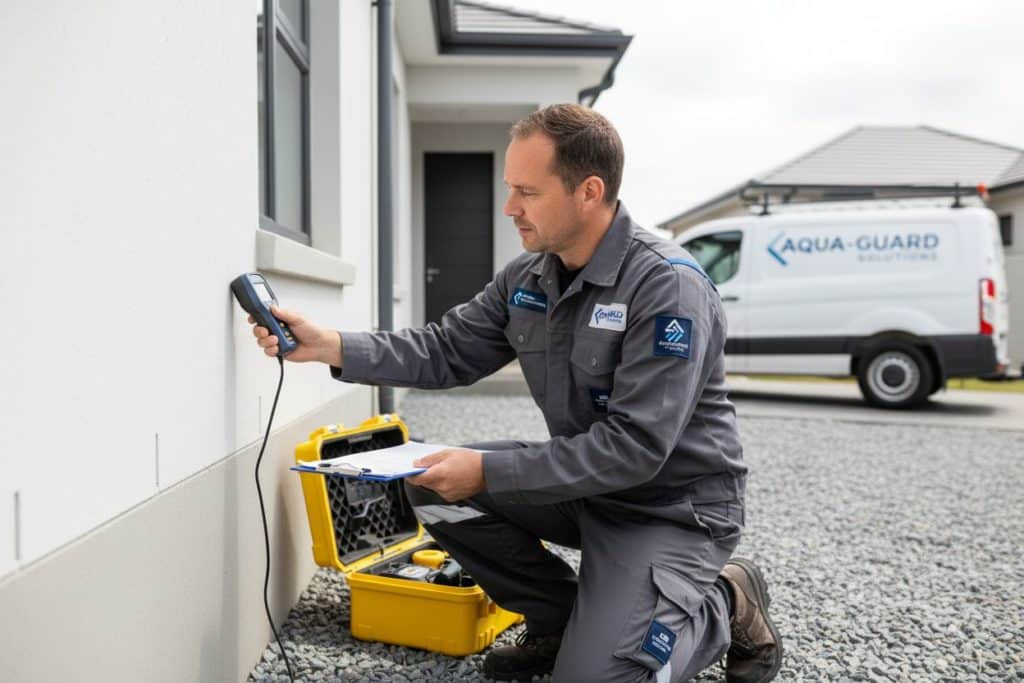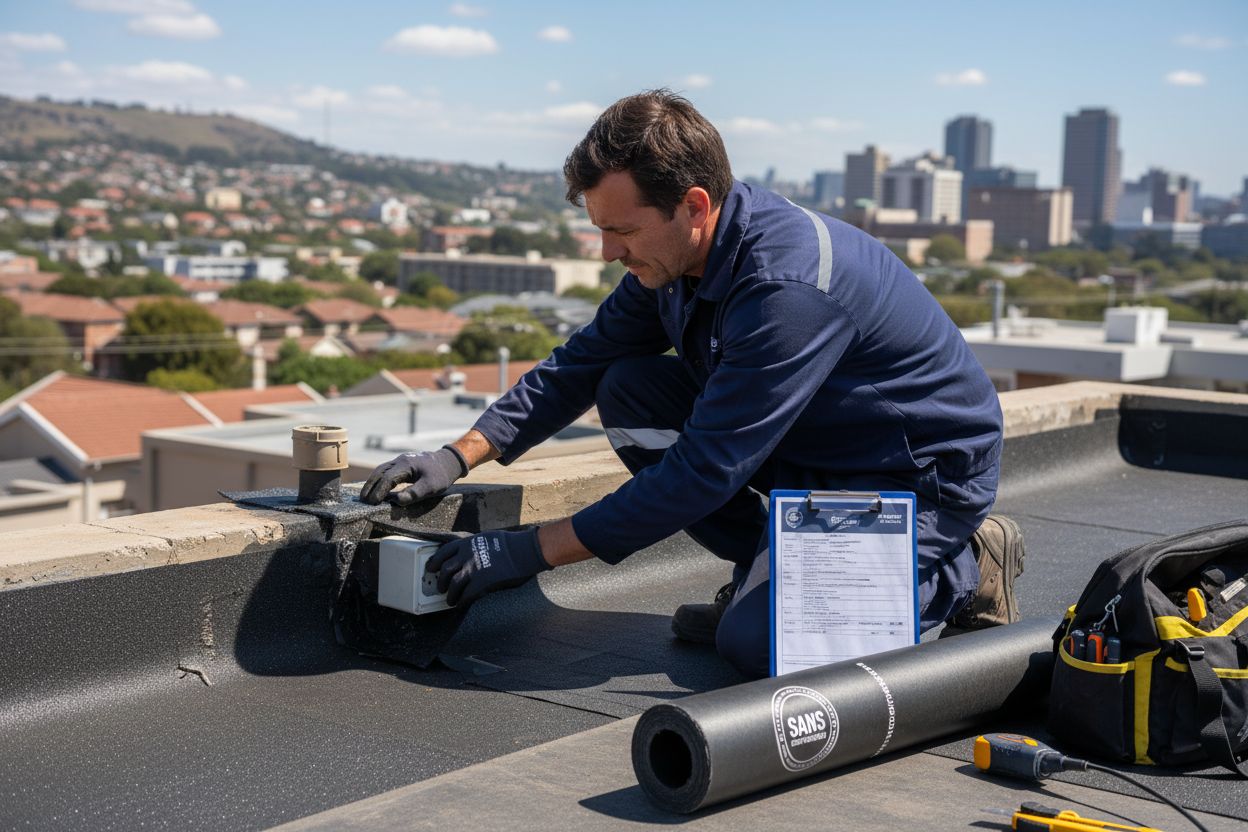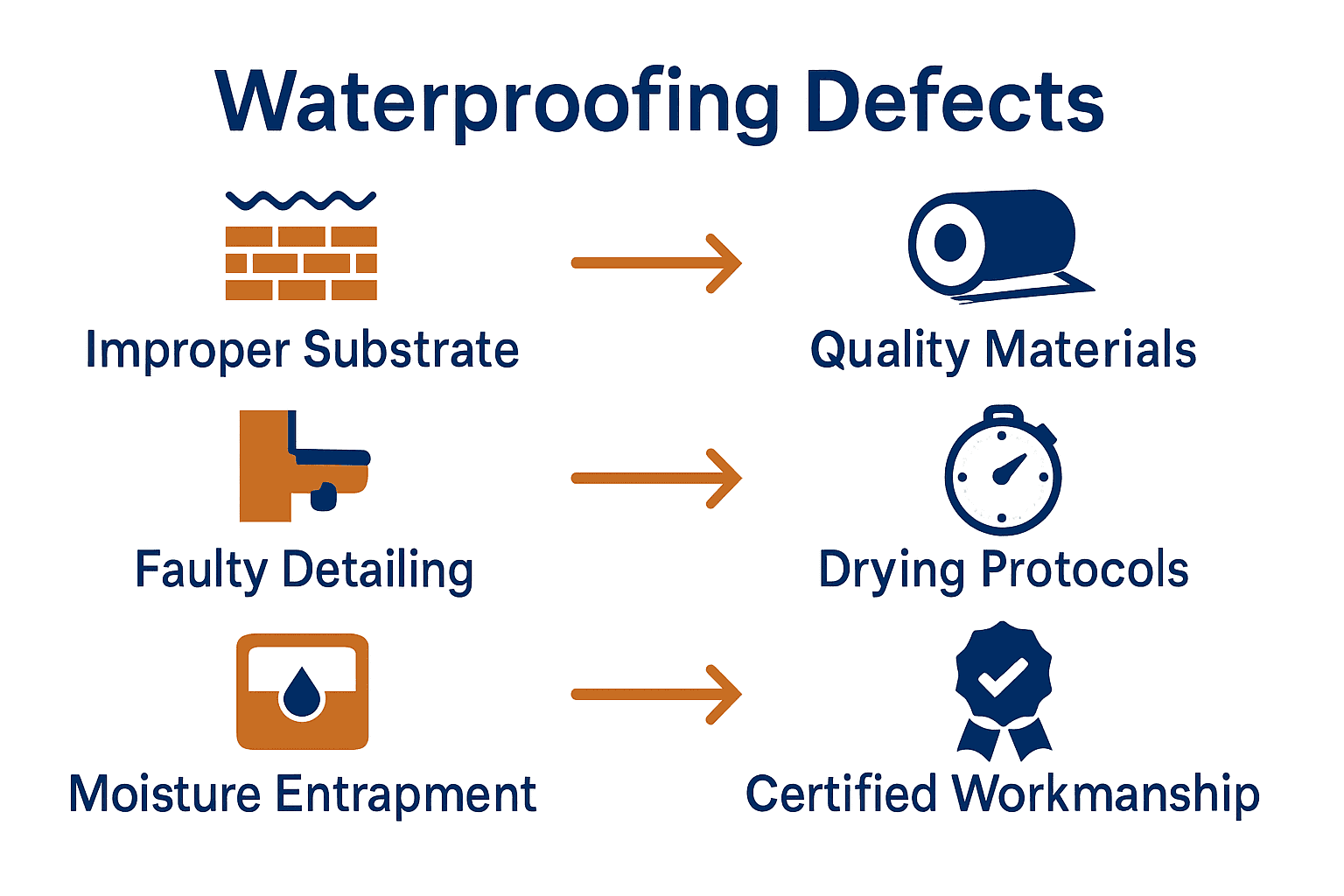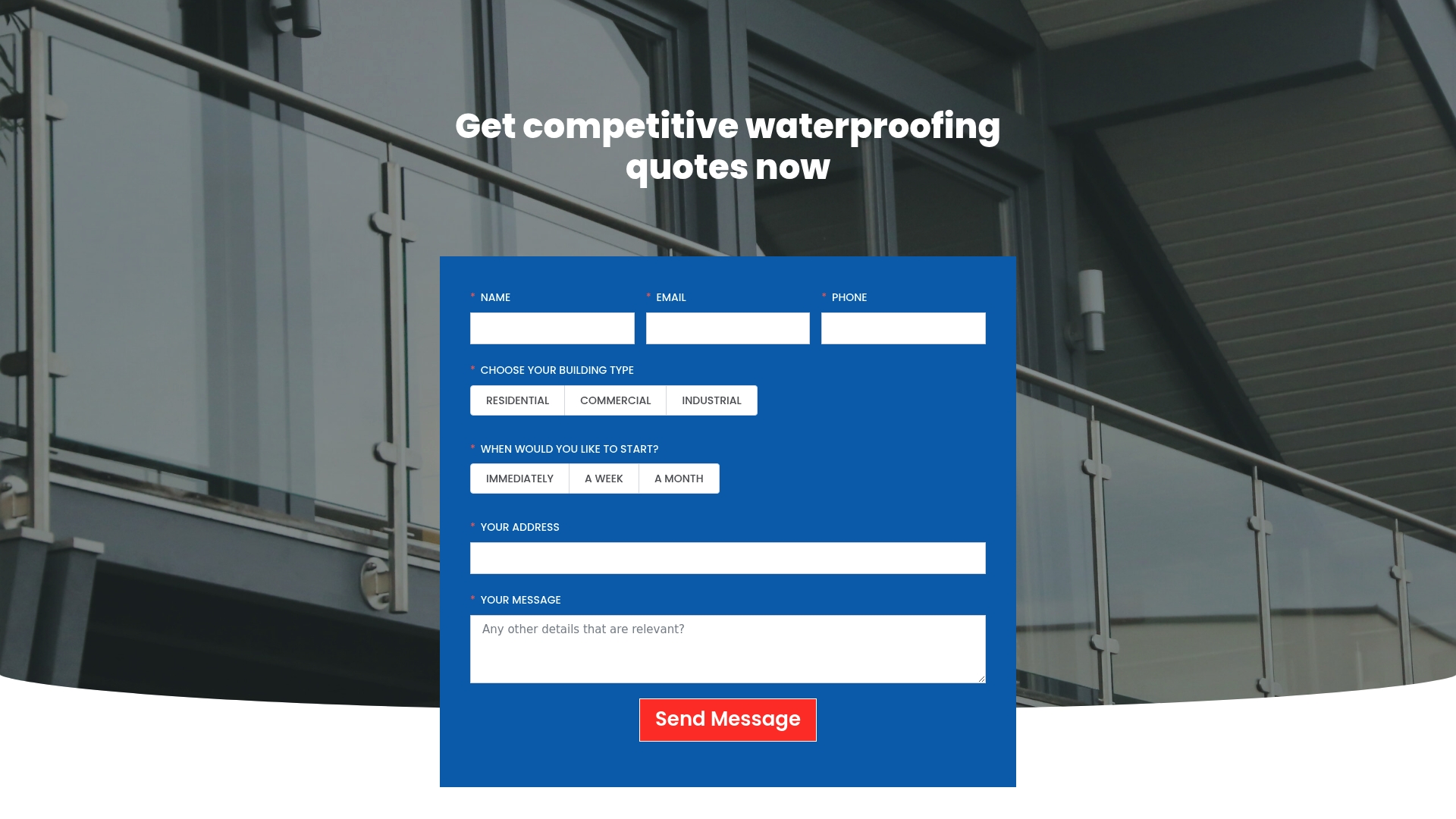Did you know that water damage accounts for over 50 percent of costly structural repairs in South African properties? Quality waterproofing can be the difference between peace of mind and facing expensive emergencies. From strict contractor certification to comprehensive inspection protocols and top-tier materials, understanding quality assurance is key to avoiding hidden problems and long-term property risks.
Key Takeaways
| Point | Details |
|---|---|
| Comprehensive Quality Assurance | Quality assurance in waterproofing involves rigorous contractor training, certification, and meticulous installation processes to protect against water damage. |
| Regulatory Compliance | Adherence to South African building regulations ensures waterproofing solutions meet performance criteria, safeguarding property investments. |
| Effective Inspection Processes | Professional inspections utilize advanced testing methods to evaluate waterproofing integrity, identifying vulnerabilities before they lead to structural issues. |
| Contractor and Material Selection | Choosing certified contractors and high-quality materials tailored to local conditions is essential for effective waterproofing and long-term protection. |
Table of Contents
- Defining Quality Assurance In Waterproofing
- Key Standards And South African Regulations
- Inspection Processes And Testing Methods
- Common Waterproofing Defects And Prevention
- Selecting Qualified Contractors And Materials
Defining Quality Assurance in Waterproofing
Waterproofing is more than just applying a sealant or membrane to a surface. Quality assurance represents a comprehensive system ensuring that waterproofing work meets rigorous professional standards, protecting your property from potential water damage. According to the Professional Roof Repair and Waterproofing Association (PRAWA) in South Africa, this process involves systematic vetting, training, and licensing of contractors to guarantee exceptional workmanship.
At its core, quality assurance in waterproofing encompasses several critical elements that safeguard property owners. These include:
- Thorough initial property assessment
- Precise material selection matching specific environmental conditions
- Professional application techniques
- Comprehensive post-installation inspections
- Legitimate certification of completed work
PRAWA’s regulatory framework ensures that waterproofing professionals undergo extensive training and demonstrate competency before receiving official certificates. Read more about waterproofing certification to understand how these standards protect your investment. Contractors must prove they understand complex moisture dynamics, substrate preparation, and appropriate solution implementation for different structural contexts.
Quality assurance ultimately translates to long-term protection. By demanding certified professionals who follow stringent guidelines, property owners dramatically reduce risks of water intrusion, structural degradation, and expensive future repairs. It’s not just about immediate waterproofing but creating a robust, reliable defence against potential water-related damages.
Key Standards and South African Regulations
Building regulations in South Africa play a critical role in ensuring waterproofing quality and performance, setting stringent standards that protect property owners from potential water damage. Learn more about local waterproofing regulations to comprehend the comprehensive framework governing this essential construction practice.
According to the South African National Building Regulations Part L (SANS 10400‑L), specific performance criteria have been established to guarantee robust waterproofing solutions. These standards mandate comprehensive requirements including:
- Temperature resistance capabilities
- UV resilience performance
- Minimum expected lifespan (10-20 years)
- Mandatory installation by certified competent professionals
The complementary standard SANS 10021 further elaborates on technical specifications, ensuring that waterproofing installations meet exacting national quality benchmarks. This regulatory framework isn’t merely bureaucratic paperwork but a strategic approach to protecting infrastructure against moisture intrusion, structural degradation, and potential long-term economic losses.
Professional waterproofing contractors must demonstrate comprehensive understanding of these regulations, proving their technical competence through rigorous certification processes. By adhering to these standards, property owners can be confident that their waterproofing solutions are scientifically designed, professionally executed, and legally compliant, ultimately safeguarding their most significant investments against water-related risks.
Inspection Processes and Testing Methods
Waterproofing inspection is a critical process that ensures the integrity and effectiveness of moisture protection systems across various structural applications. According to the South African National Accreditation System (SANAS), comprehensive testing requires rigorous evaluation by government-recognized, accredited inspection bodies adhering to international standards like ISO/IEC 17020 and ISO/IEC 17025.
Agrément South Africa plays a pivotal role in establishing technical performance criteria for waterproofing systems. Their comprehensive assessment covers multiple critical areas:
- Foundation waterproofing integrity
- Roof membrane performance
- Wall protection effectiveness
- Underground structure moisture resistance
- Comprehensive documentation requirements
Learn about advanced waterproofing testing protocols to understand the intricate processes professionals use to validate protection systems. The inspection methodology involves systematic approaches including visual assessments, moisture mapping, pressure testing, and specialized diagnostic techniques that simulate real-world environmental conditions.
Professional waterproofing inspections go beyond surface-level examinations. Certified technicians employ advanced diagnostic tools like infrared thermal imaging, moisture meters, and pressure differential testing to detect potential vulnerabilities. These comprehensive evaluations ensure that waterproofing systems not only meet immediate performance standards but also demonstrate long-term resilience against diverse environmental challenges, protecting property owners from potential water-related structural damage.
Common Waterproofing Defects and Prevention
Waterproofing failures can transform a protective investment into a costly nightmare for property owners. According to SANS 10400‑L guidance, several critical issues frequently compromise moisture protection systems, ranging from subtle substrate problems to catastrophic installation errors. Explore detailed insights on identifying waterproofing failures to understand these potential risks.
The most prevalent defects identified by national standards include:
- Moisture vapor entrapment leading to material delamination
- Improper substrate preparation before membrane application
- Faulty detailing around critical junctions like outlets and turn-ups
- Inadequate screed thickness causing structural vulnerabilities
- Insufficient substrate drying before waterproofing installation
Prevention strategies are systematic and demand meticulous attention. Professionals recommend comprehensive approaches such as implementing precise substrate preparation techniques, ensuring complete surface drying, creating appropriate coves and fillets, and using specialized materials compatible with specific structural environments. These methodical interventions dramatically reduce the likelihood of moisture penetration and subsequent structural degradation.
Ultimately, preventing waterproofing defects requires a combination of expert knowledge, rigorous quality control, and proactive maintenance. Property owners should prioritize hiring certified professionals who understand these nuanced technical requirements, utilize high-quality materials, and follow stringent installation protocols that meet or exceed national building standards. Investing in preventative measures today can save significant repair costs and protect your property’s structural integrity for years to come.
Here’s a comparison of common waterproofing defects and recommended prevention strategies:
| Defect Type | Typical Cause | Prevention Strategy |
|---|---|---|
| Moisture vapor entrapment | Inadequate drying Poor ventilation |
Ensure full substrate drying Improve airflow |
| Improper substrate preparation | Surface contamination Uneven surfaces |
Clean and level substrate Apply primers |
| Faulty junction detailing | Inaccurate installation Poor material choice |
Use correct detailing Quality workmanship |
| Inadequate screed thickness | Insufficient material Poor planning |
Confirm design specs Apply proper screed depth |
| Insufficient drying before installation | Rushed schedules Weather conditions |
Allow drying time Monitor moisture levels |
Selecting Qualified Contractors and Materials
Contractor selection represents the most critical decision in ensuring successful waterproofing outcomes. According to the Professional Roof Repair and Waterproofing Association (PRAWA), legitimate contractors must demonstrate comprehensive professional credentials beyond mere technical skills. Discover essential contractor selection criteria to make an informed investment in your property’s protection.
PRAWA membership mandates stringent requirements for waterproofing professionals, including:
- Registered company status
- Valid tax clearance documentation
- Comprehensive professional insurance
- Legislative compliance certification
- Recognized skills certification through RPL or formal training
- Ability to issue official competency certificates
Materials selection is equally crucial, with regional manufacturers like Sealtek Cape offering locally-designed solutions tailored to South African environmental conditions. Their accreditation programme provides applicators access to specialized products with standardized procedures, technical support, and critically, 5-year guarantees covering both materials and workmanship.
Ultimately, selecting qualified contractors and materials demands a holistic approach. Property owners should prioritize professionals who not only possess technical certifications but also demonstrate comprehensive understanding of local environmental challenges, use region-specific materials, and provide robust long-term warranties. This strategic approach transforms waterproofing from a mere maintenance task into a comprehensive protective investment for your property’s structural integrity.
Protect Your Home with True Quality Assurance in Waterproofing
If you are concerned about hidden water damage or the risk of structural issues from poor waterproofing, you already understand the importance of strict quality standards. As highlighted in our complete guide, property owners often struggle with finding certified contractors, verifying professional workmanship, and choosing materials that truly last in the South African climate. Faulty insulation, missed inspections, and lack of regulation are some of the real pain points that can turn small leaks into major headaches.
Do not wait until water damage puts your property or investment at risk. Take the expert approach by connecting with Pro Waterproofing, where certified specialists deliver all-encompassing solutions. Whether you need help with site inspections, contractor selection, or proven moisture protection systems, we offer guidance and service at every step. See how our standards compare by visiting our expert insights and resources or start a direct enquiry at Pro Waterproofing. Secure your peace of mind with quality-verified waterproofing right now.
Frequently Asked Questions
What is quality assurance in waterproofing?
Quality assurance in waterproofing is a comprehensive system that ensures waterproofing work meets professional standards, protecting properties from water damage. It includes initial assessments, material selection, application techniques, post-installation inspections, and certification of completed work.
What are common waterproofing defects?
Common waterproofing defects include moisture vapor entrapment, improper substrate preparation, faulty junction detailing, inadequate screed thickness, and insufficient substrate drying before installation.
How can I prevent waterproofing failures?
Preventing waterproofing failures involves meticulous substrate preparation, ensuring complete surface drying, using correct detailing around junctions, and applying proper screed thickness. Engaging certified waterproofing professionals is also crucial to apply high-quality materials and follow strict installation protocols.
What qualifications should I look for in waterproofing contractors?
When selecting waterproofing contractors, look for registered company status, valid tax clearance documentation, comprehensive professional insurance, legislative compliance certification, recognized skills certification, and the ability to issue official competency certificates.




